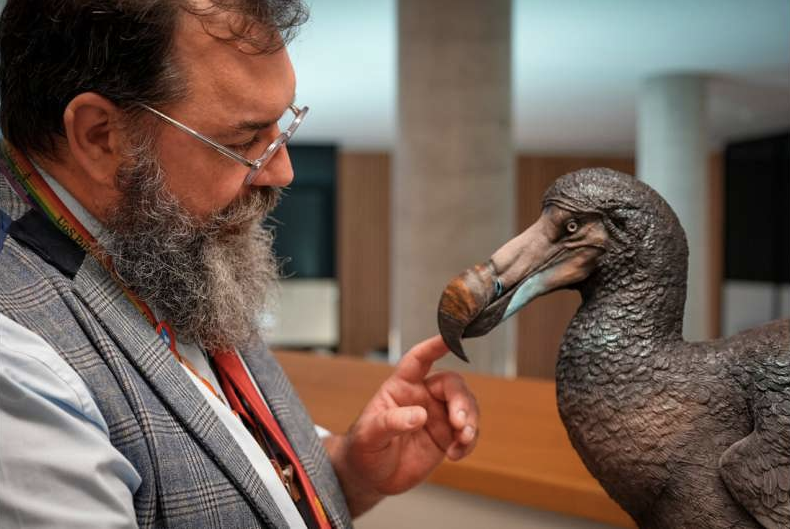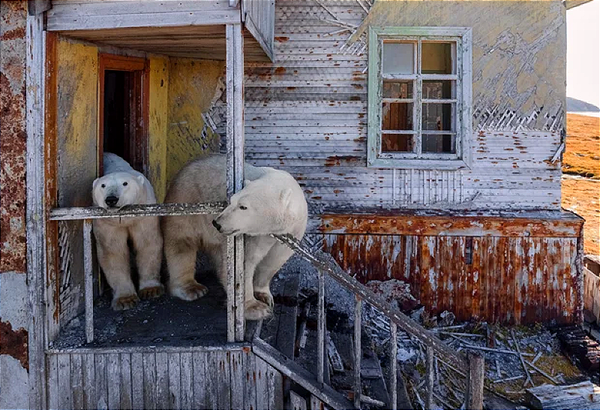Emily is dying. So why is she selling off her time to strangers?

Hi everyone! Mathew Ingram here. As many of you probably know, I am able to continue writing this newsletter in part because of your financial help and support, which you can do either through my Patreon or by upgrading your Ghost subscription to a monthly contribution. I enjoy gathering all of these links and sharing them with you, but it does take time, and your support makes it possible for me to do that. And I appreciate it, believe me! If you like this newsletter, please share it with someone else. Thanks for being a reader!
Emily is dying. So why is she selling off her remaining time to strangers?

From The Guardian: "Over the course of the day, about 30 people sat with Emily. Some used their three minutes for quiet reflection. Others wanted conversation, asking her questions or sharing why they had come to see her. Usually you’d describe a project like this as performance art, but Emily isn’t an artist: she’s a terminally ill 32-year-old who doesn’t know how much time she has left. Her performance is part of a project titled Time to Live, designed by the Australian Cancer Research Foundation (ACRF) to raise awareness and funds. Each participant has effectively “bought” a slice of Emily’s time. Some were complete strangers, others were family and friends; either way, the experience provoked strong emotions. Afterwards, I meet another participant, Helen, who is visibly moved. It has raised a lot for both of us: we speak about the grief of losing our mums to cancer, the anxiety of living with a genetic predisposition."
This Nazi villa is falling apart but the German government doesn't know what to do with it

From the New York Times: "No one knows what to do with the estate beside the Bogensee lake in Brandenburg. It was built for Joseph Goebbels, the Nazi propaganda minister, by his grateful country just before the start of World War II. Owned by the State of Berlin today, it has sat moldering expensively on the public’s tab, along with a set of dramatic dormitories built later by the Communist Party to house an indoctrination school. It is a nearly 20-acre campus that echoes with the pasts of two totalitarian regimes. Too burdensome for the state to continue carrying, prohibitively expensive for most real estate prospectors and tainted by history, Berlin has given up on selling or developing it. Instead, it has offered to give the Nazi mansion away, free. In exasperated comments made to Parliament this spring, Stefan Evers, the state’s senator for finance, made the pitch — take it off our hands, or we will tear it down."
The Dodo was not as slow and stupid as we once thought, scientists say

From Phys.org: "By the 18th and early 19th centuries, the Dodo and the Solitaire were considered to be mythological beasts. It was the hard work of Victorian-era scientists who finally proved that the Dodo and the Solitaire were not mythological but were giant ground doves. Unfortunately, no one could agree how many species there had been. Throughout most of the 19th and 20th centuries, researchers thought there were three different species. To unpack this confusion, researchers went through all the literature on the Dodo and Solitaire, encompassing hundreds of accounts dating back to 1598. The researchers believe the popular idea of the Dodo as a fat, slow animal, predestined for extinction is flawed. Evidence from bone specimens suggests that the Dodo was almost certainly a very active, very fast animal. But the islands they lived on lacked mammalian predators. So, when humans arrived, bringing rats, cats, and pigs, the Dodo never stood a chance."
Queen Victoria was one of the first women to have an anaesthetic while giving birth

From Dr. Fitzharris: "Childbirth was wrought with dangers in the 1800s, not least the risk of ‘childbed fever’ which claimed the lives of thousands of women. But even if a woman escaped with her life, she couldn’t avoid the pain. All this changed in November 1847, when Dr James Young Simpson began using chloroform as an anaesthetic. Earlier that year, Simpson started using ether to relieve the pains of childbirth, but he was dissatisfied with the smell, the large quantity needed, and the lung irritation it caused. On the evening of November 4th, Simpson and his two friends experimented with it. Impressed with the drug’s potency, Simpson began using chloroform as an anaesthetic, and the first baby born to a mother under the drug’s influence was named Anaesthesia. The Duchess of Sutherland sent a pamphlet on Simpson’s discovery to Queen Victoria, who was then in her sixth pregnancy and whose distaste for pregnancy was well known."
Their favorite teacher wanted to be an astronaut so when he died they built him a spacecraft

From Seattlemet: "For as long as Nae’Ana Aguon could remember, she wanted Mr. Meline as a teacher. Her older brother had been in Mr. Meline’s class years earlier, and she had visited the classroom, a classroom like no other at Spanaway’s Camas Prairie Elementary: telescopes, models of NASA shuttles, Star Trek posters, a mobile of the solar system. And every year Meline’s class built a comet—rocks, dirt, dry ice—then studied the comet with the intensity of a science team in a sci-fi film who’d discovered it in some exotic location. He had attended the Space Academy for Educators in Alabama that summer and piloted a NASA simulator. Mr. Meline enlisted Nae’Ana and her classmates into a kind of space academy of his own design, issuing each a pin with flight wings. Play by Mr. Meline’s rules—pay attention in class, complete assignments—and your wings remained upright. Run afoul, and your wings were turned upside down until you proved yourself."
Bananas are on the brink of extinction because they are all clones of each other

From Popular Science: "The bright bananas dotting your fruit bowl are in some serious trouble. A popular type of banana is facing extinction from a fungal pathogen. The disease Fusarium Wilt blocks the flow of nutrients to the fruit and makes it wilt. During the 1950s, the pathogen wiped out commercial banana crops and made one species–Gros Michel bananas–functionally extinct. Largely in response to banana wilt, the Cavendish variety that we get now was bred to be a disease-resistant replacement and is the most popular type of commercially available banana today. This worked for a while, but by the 1990s, there was another outbreak of banana wilt that spread from Southeast Asia to Central America. New research from an international team of scientists has pinpointed the molecular mechanisms behind the microbe that destroys bananas and it opens the door to new treatments and strategies against the pathogen."
Video shows climbers on an active volcano suddenly changing their minds
I've just had this confirmed. I thought it was too insane to be true, but it is. This is a video of some climbers on Mt Dukono on Saturday who suddenly realised how bloody stupid their decision to climb was 😬😱
— Volcaholic 🌋 (@volcaholic1) August 19, 2024
Via: @MurtadhaOne pic.twitter.com/ueKk3j3Jlk
Acknowledgements: I find a lot of these links myself, but I also get some from other newsletters that I rely on as "serendipity engines," such as The Morning News from Rosecrans Baldwin and Andrew Womack, Jodi Ettenberg's Curious About Everything, Dan Lewis's Now I Know, Robert Cottrell and Caroline Crampton's The Browser, Clive Thompson's Linkfest, Noah Brier and Colin Nagy's Why Is This Interesting, Maria Popova's The Marginalian, Sheehan Quirke AKA The Cultural Tutor, the Smithsonian magazine, and JSTOR Daily. If you come across something interesting that you think should be included here, please feel free to email me at mathew @ mathewingram dot com



